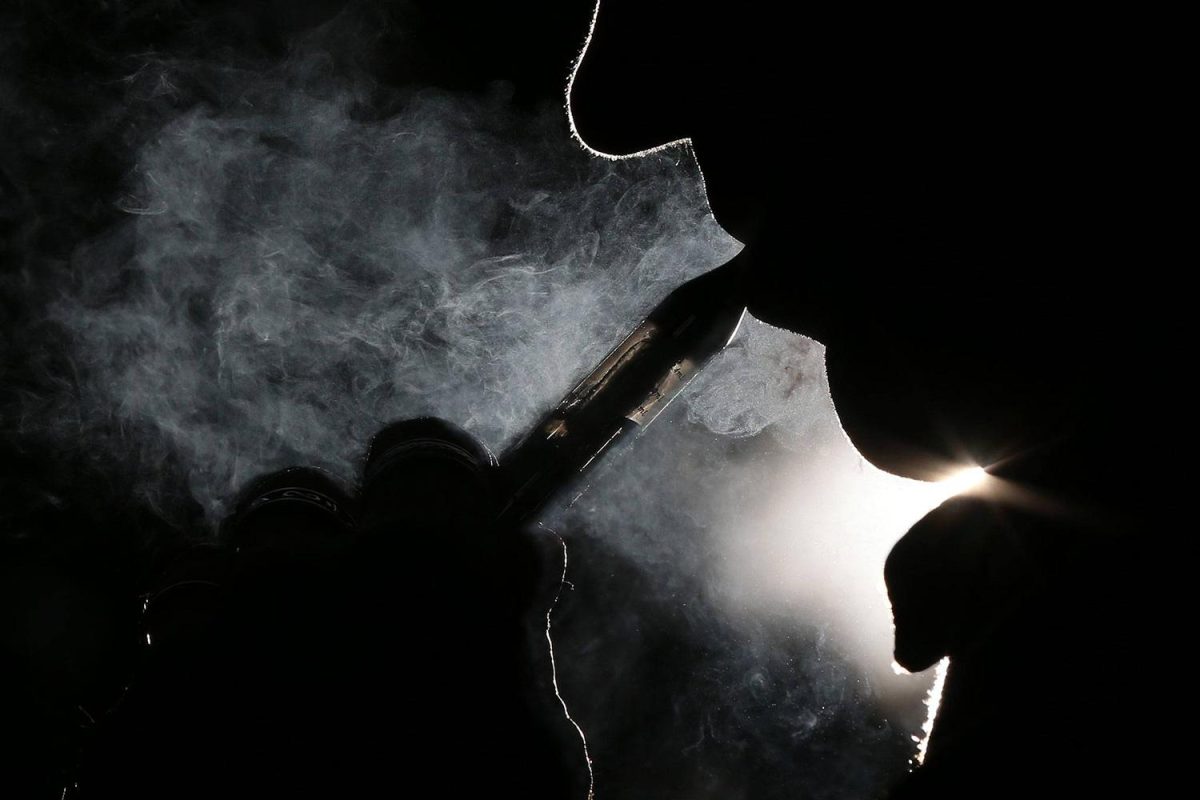Exactly how safe are the “safe” alternatives to traditional cigarettes?
By Aditya Uppuluri
On January 22, 2015 The New England Journal of Medicine published a study titled “Hidden Formaldehyde in E-Cigarette Aerosols regarding” the rising use of e-cigarettes and whether these cigarette substitutes are as healthy as they are advertised as.
The research asserts formaldehyde-releasing molecules are formed in the “vaping process.” Many may have heard of the harmful effects of formaldehyde in the past. According to the National Toxicology Program, formaldehyde is a group 1 carcinogen—it is known to cause cancer in humans.
This is where a lot of discussion comes in. After the publication of this article, news companies jumped on the information and made claims such as “High Levels of Formaldehyde Hidden in E-Cigs.”
These claims are correct, but they are also misleading. The study published in the New England Journal of Medicine explains formaldehyde-releasing compounds were only observed when the tested e-cigarette was put at its highest setting. When the e-cigarette was kept at low voltage, there were no signs of formaldehyde-releasing agents.
Does this mean that e-cigarettes are harmless? Not Quite.
Does this mean that e-cigarettes cause cancer? Not Quite.
So, what does this mean?
To be honest, researchers are not really sure. E-cigarettes are a relatively new technology, and it may be too soon to make a conclusion. Though there may not be a lot of scientific studies to confirm the safety of e-cigarettes, there is still plenty of information that points in the other direction. To uncover this information, we have to delve deeper into how e-cigarettes work.
The operating principle of an e-cigarette is simple: an electric current vaporizes a liquid, and the individual inhales the vapor. The primary issue is the liquid. The liquid may contain nicotine, flavorings, and other additives that allow the e-cigarette to work and provide the feeling of smoking.
Unlike regular cigarettes, e-cigarettes allow the user to choose the level of nicotine he or she wants. The amount of nicotine depends on the cartridge; individuals can choose cartridges with high concentrations of nicotine or ones with low concentrations. “Nicotine-free” cartridges also exist, but studies have shown even those contain trace amounts of nicotine.
While the user can regulate nicotine levels, the problem with e-cigarettes is that the nicotine is in liquid form. Liquid nicotine is lethal at certain doses. The Centers for Disease Control reported that the average number of e-cigarette related emergency calls to poison control centers increased drastically from 2010 to 2014. In September 2010, .3% of emergency calls were related to e-cigarettes. In February 2014, the percentage of those emergency calls had increased to 41.7%.
That’s .3 to 41.7 in 4 years!
This is one example of the potential weaknesses and dangers of e-cigarettes. Additionally, there are other issues that have to be further researched and regulated.
Second hand e-cigarette smoke is an issue of major concern; it is established that regular cigarettes release dangerous secondhand smoke. Researchers have reason to believe that the exhaled vapor has toxic chemicals that can take a toll on the lives of “secondhand vapers.” Though these weaknesses may exist, it will take time and research for these dangers to be confirmed.
The next great challenge regarding e-cigarettes will be acting upon the information we have. Arguably, the easiest part is obtaining information. The hardest part is finding a way to regulate e-cigarettes.
One of the major issues with e-cigarettes is that they lack strong regulation measures—the Food and Drug Administration does not have the authority to regulate e-cigarettes. Manufacturers of e-cigarettes assert that the FDA should not be able to monitor recreational activities (e-cigarettes).
It is important to remember e-cigarettes are issues of public health because they contain chemicals that have been known to harm the body. At this time, it is hard to decisively pass judgment on e-cigarettes. Clinical experiments show that they are dangerous, but those clinical experiments tested the most extreme settings.
At the same time, reason and theory reveal that the chemicals in e-cigarettes are in fact dangerous. Perhaps the best thing to do is to increase regulation of e-cigarettes while researchers continue to study them.


































